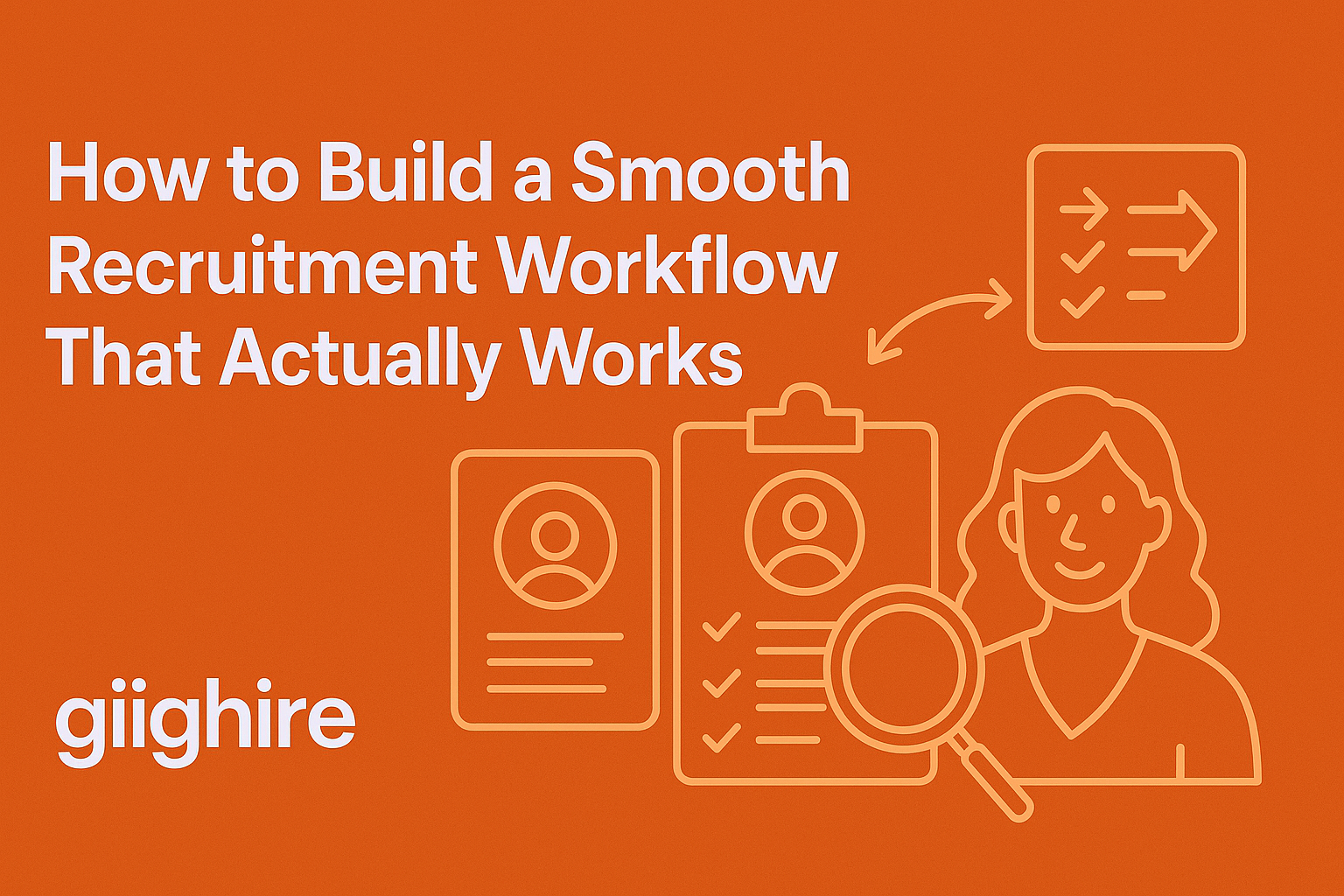This website uses cookies so that we can provide you with the best user experience possible. Cookie information is stored in your browser and performs functions such as recognising you when you return to our website and helping our team to understand which sections of the website you find most interesting and useful.

Let’s face it: recruitment can get messy. Between tracking applicants, managing client expectations, scheduling interviews, and juggling job boards, it’s easy for things to fall through the cracks.
But it doesn’t have to be that way.
With a well-oiled recruitment workflow, you can bring structure to the chaos. You’ll fill roles faster, impress clients, and keep candidates engaged from start to finish. In short, a smooth recruitment workflow isn’t just “nice to have.” It’s how you win.
Here’s how to build one that works for you (not against you).
Step 1: Map Out Your Recruitment Stages
Start by identifying the key stages in your hiring process. For most agencies, this includes:
- Job intake
- Sourcing & outreach
- Screening & shortlisting
- Interview coordination
- Client feedback
- Offer & placement
- Aftercare & follow-up
Each stage should have clear owners, clear actions, and clear tools. If one of those is missing, that’s your first bottleneck.
💡 Pro tip: Don’t overcomplicate it. Keep it lean. Only add stages that genuinely add value to the process.
Step 2: Centralise Everything
You can’t have a smooth workflow if half your data is buried in email threads or scattered across spreadsheets.
Use a recruitment CRM (like Giig Hire) that keeps everything in one place: your candidates, jobs, clients, and communication. That way, you always have the full picture, and your team isn’t wasting hours duplicating work or chasing updates.
Step 3: Automate Where You Can
Recruiters spend way too much time on repetitive tasks. Shortlisting, sending follow-up emails, updating statuses — all of it eats into the time you could spend actually recruiting.
With the right system in place, you can:
- Trigger emails when candidates move stages
- Schedule interviews without 20 back-and-forths
- Send offer letters in a couple of clicks
- Track everything automatically in one view
That’s not just smoother , that’s smarter.
Step 4: Keep Communication Clear and Human
Your workflow doesn’t just live inside your system; it’s lived by your candidates and clients.
Make sure everyone knows what happens next and when. Use templated comms for consistency, but personalise where it matters. Ghosting candidates (even unintentionally) or keeping clients in the dark is a sure-fire way to ruin your brand.
Step 5: Measure & Improve
You can’t improve what you don’t track.
Look at key metrics like:
- Time to hire
- Drop-off rates between stages
- Candidate NPS or feedback
- Client satisfaction
Are certain jobs stalling in the same stage? Are interviews being delayed? Is your sourcing falling flat? These insights help you spot friction and fix it.
12 Important Metrics You Need to Measure
Step 6: Use the Right Tools for Your Workflow (Not the Other Way Around)
A smooth workflow starts with choosing tools that work the way you do.
At Giig Hire, we built our recruitment CRM specifically for agencies that want:
- A simple pipeline view
- Fast, flexible candidate management
- Integrated email tools
- Job board distribution
- No fluff. Just what you need, at £9.99 or £40 per seat.
Whether you’re solo or scaling a team, the right setup gives you confidence that your workflow will hold up, even when things get busy.
Final Thoughts: Less Admin, More Placement
Recruitment doesn’t have to be stressful.
With a clear, repeatable process, you can focus on what actually matters: placing great candidates in great roles and building lasting client relationships.
So take the time to tighten your workflow now. Future you — and your margins — will thank you for it.
Looking for a CRM that helps you run a smoother recruitment workflow without breaking the bank?
Start using Giig Hire today for free.
